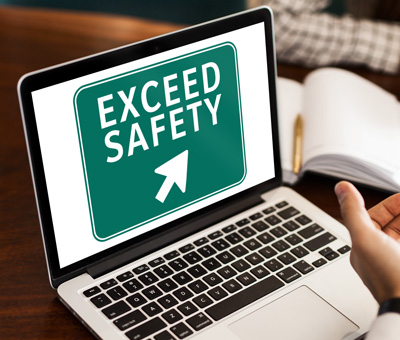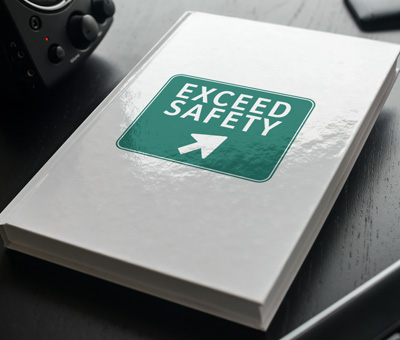Fire safety on jobsites should always be a top priority. In addition to safeguarding employees’ lives, fire safety also acts as a vital protection for valuable assets and the livelihood of the company. There are many critical aspects of workplace safety, including prevention, preparedness, and response.
The first line of defense when talking about fire safety is prevention. It serves as the most effective, lifesaving, cost-saving strategy. When employers prioritize fire prevention measures, it leads to reduced risk of fire incidents. Examples of fire prevention includes regularly maintaining electrical systems and equipment, properly storing flammable materials, and conducting risk assessments on a routine basis. One of the most common workplace hazards are electrical fires. A simple way to significantly reduce risk is to ensure all electrical systems are up to code and regularly inspected. Reiterating to employees proper housekeeping and electrical safety is an additional preventative. Some practical guidance is not overloading power outlets and keeping flammables away from heat sources.
Education and training are keys to effective fire safety. Upon hire and annually thereafter, employees must be comprehensively trained in fire safety. The training should cover topics including evacuation procedures, proper use of fire extinguishers, and how to respond during a fire emergency. To help employees become familiar with emergency procedures, it is important to conduct regular fire drills and training opportunities. This can help ensure a quick and effective response in the event of a fire incident.
Each workplace or jobsite should have an emergency evacuation plan that is clean and well-documented. The evacuation plan should include clearly defined evacuation routes and an assembly point. The emergency evacuation plan should be regularly reviewed and updated. It should be changed immediately in the event that the workplace layout changes, or personnel is added who may require special arrangements for evacuation (i.e., a person with a disability).
Having effective fire detection and suppression systems is critical. Within a workplace, smoke detectors, fire alarms, and sprinkler systems can help minimize any damage caused by fire. It is important to regularly maintain and test these systems to be sure they are functioning properly in the event that they are needed. Additionally, fire extinguishers can help mitigate a catastrophe at the onset of a fire. Making sure that a fire extinguisher is located in a workplace and near high-risk equipment for easy access is crucial. Designating someone to regularly inspect and maintain the fire extinguishers is a key responsibility to safeguard employees in the event of a fire. It should be noted that if an employee is not comfortable using a fire extinguisher, they should never risk their life to try and fight the fire.
In the event that a fire emergency occurs, call 911 as soon as you are out of harm’s way. Establishing responsible parties to communicate to non-emergency individuals will allow for more clearcut direction in the process of alerting everyone to fire damage. If any injuries result from the fire, first aid should be administered by a trained employee while waiting for emergency services to arrive.
Post-fire incident, damages should be assessed, and the response should be reviewed. Changes should be implemented if there were any weak areas identified. Make notes of what was done well. Take the information and use it as a tool to update and enhance employee training, fire safety systems, and protocols. Additionally, it’s critical that employers stay informed and compliant with local and national fire safety regulations. Do not ignore or neglect these regulations. In doing so, it can result in lives lost, assets at risk, and/or legal liabilities.
Proactive prevention, thorough training and the right equipment is required to keep a workplace safe from catastrophic fire incidents. More than compliance, implementing a fire safety policy protects lives and assets. Employers who prioritize fire safety create secure and productive work environments for all of their employees. Remember, when dealing with fire safety, prevention is always better than dealing with the aftermath of a fire incident.
https://www.osha.gov/sites/default/files/publications/OSHA3527.pdf
https://www.esafety.com/5-workplace-fire-safety-tips/









